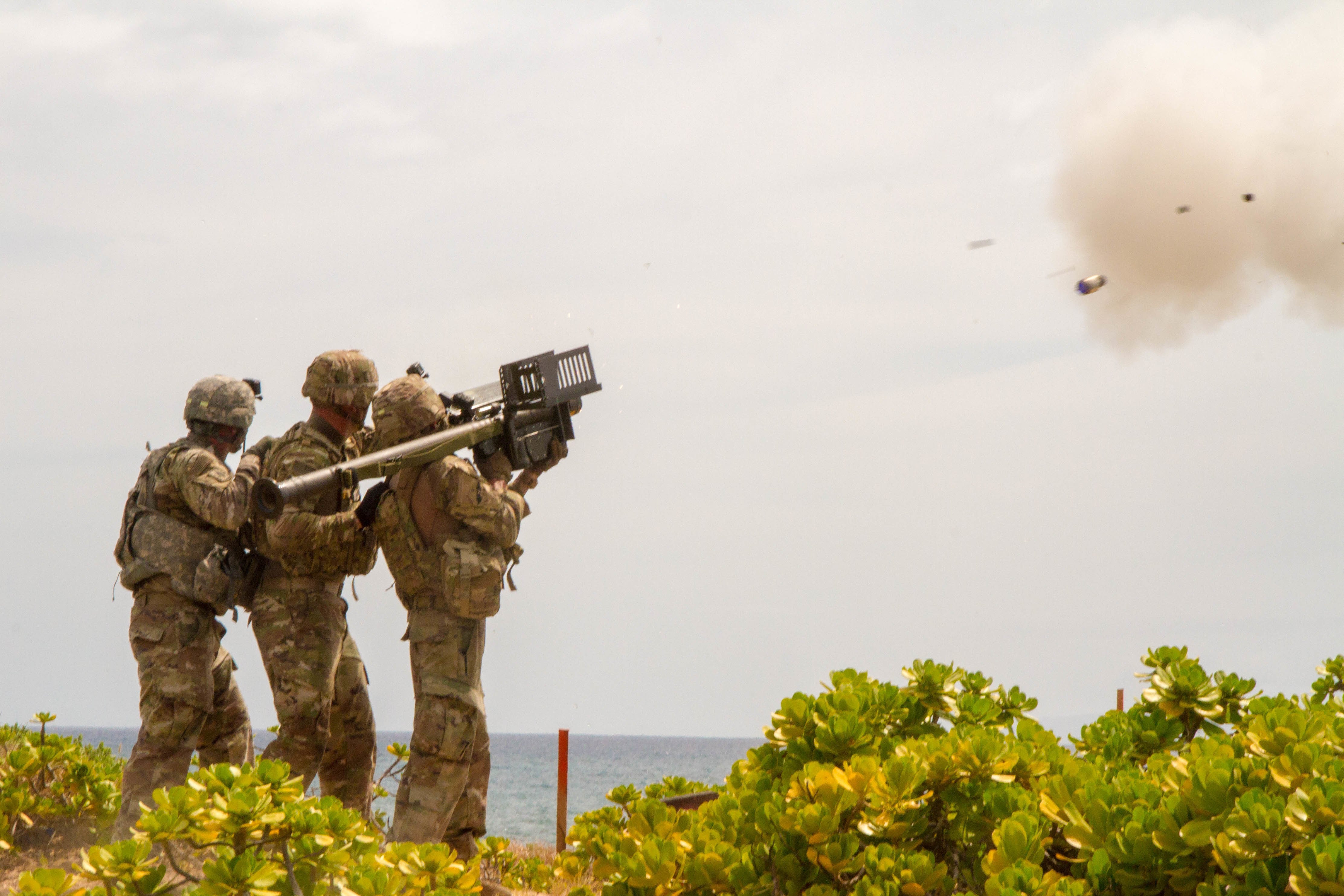Right now, a forward deployed brigade has what it needs to target threats and see what’s coming in its immediate battlespace.
But that’s no longer enough.
While yesterday’s brigade commander could have held focus on a few dozen kilometers in artillery ranges, on the battlefield of tomorrow, an attack could strike from 1,000 miles away or more.
That’s why tying together old and new systems across not just the Army but also with the other services and allies through the Joint All-Domain Command and Control project is how Army leaders such as Lt. Gen. Eric Wesley — deputy commanding general of U.S. Army Futures Command and director of the Futures and Concepts Center — see a way forward.
RELATED

And the systems wouldn’t only help unit leaders see what’s coming at them but also give them a way to identify and target enemy systems and switch the shooter they’ll use on a moment’s notice.
Right now, the airwaves are cluttered with commands calling commands, adjusting targets and assets.
That’s just too slow for what warfighters face today.
So JADC2 and other efforts such as the Advance Battle Management System in the Air Force are finding ways to make those weapons systems talk to each other, transferring data automatically.
A December Air Force experiment did just that between and F-35 and F-22, Wesley noted.
But in the near future the same will be possible between an aircraft and a ground-based fires platform.
This is far from the first time that services work jointly to target enemy assets. That was a proven concept during the Persian Gulf War in the early 1990s and repeated in the 2003 Iraq invasion. But, Wesley, said those methods were “brittle” and “industrial.”
And they required 20th Century-style planning, complicated air tasking orders, weeks of planning, multi-service coordination and 72-hour missions on a dedicated platform.
Wesley noted that neither of those conflicts was against a peer adversary in a hyperactive battle, which is what most planners are predicting for any potential, future conflict.
With direct data linking, sharing sensor information between all services and platforms, a battery commander of a long range precision fires unit in the Pacific could be called up rapidly to take out a target that only minutes before had been in the crosshairs of an F-35, he said.
And linking the systems with sensors and shooters also changes the day-to-day business of commanders in theater.
Right now, satellites give one picture of an area but can’t provide all the targeting detail that units need.
The “competition space” now and in the future will require continuous probing of enemy systems, finding ways to cause them to turn on and light up so that they can be targeted.
So, a commanders day-to-day duties will be keeping those targets active and ensuring their communication links are solid so that, when called upon, they can take out a target without delay.
And that will often be more of an option than it is now.
If an adversary such as China or Russia is provoking U.S. units or allies just below the level of conflict, the “gray zone” experts reference, right now U.S. officials have two options — don’t react and accept whatever change has happened or mobilize for combat.
But, with connected and coordinated systems, Wesley said, military assets can compete “left of conflict,” allowing the U.S. and its allies to push back against unconventional or gray zone threats.
And, if a strike is needed, the targeting and sensing connection gives those commanders a way to rapidly eliminate a host of targets, ending any conflict before it escalates.
While building JADC2 and connecting the forces is being pushed by peer competition, it can have benefits for current, lower-level threats, such as recent strikes by Iran against Saudi Arabia and U.S. sites in the Middle East.
In the past, Wesley said, very sophisticated systems were built and deployed for specific threats, such as the Patriot Missile System, which was used to take down SCUD missiles and protect from other higher-level threats.
Deploying a Patriot Battery to every site that might see a swarm of cheap drones just won’t work either in cost or numbers.
But, inexpensive counter-drone systems that can be deployed can link into a larger network, taking advantage of more sophisticated sensors to detect threats, Wesley said.
Todd South has written about crime, courts, government and the military for multiple publications since 2004 and was named a 2014 Pulitzer finalist for a co-written project on witness intimidation. Todd is a Marine veteran of the Iraq War.




